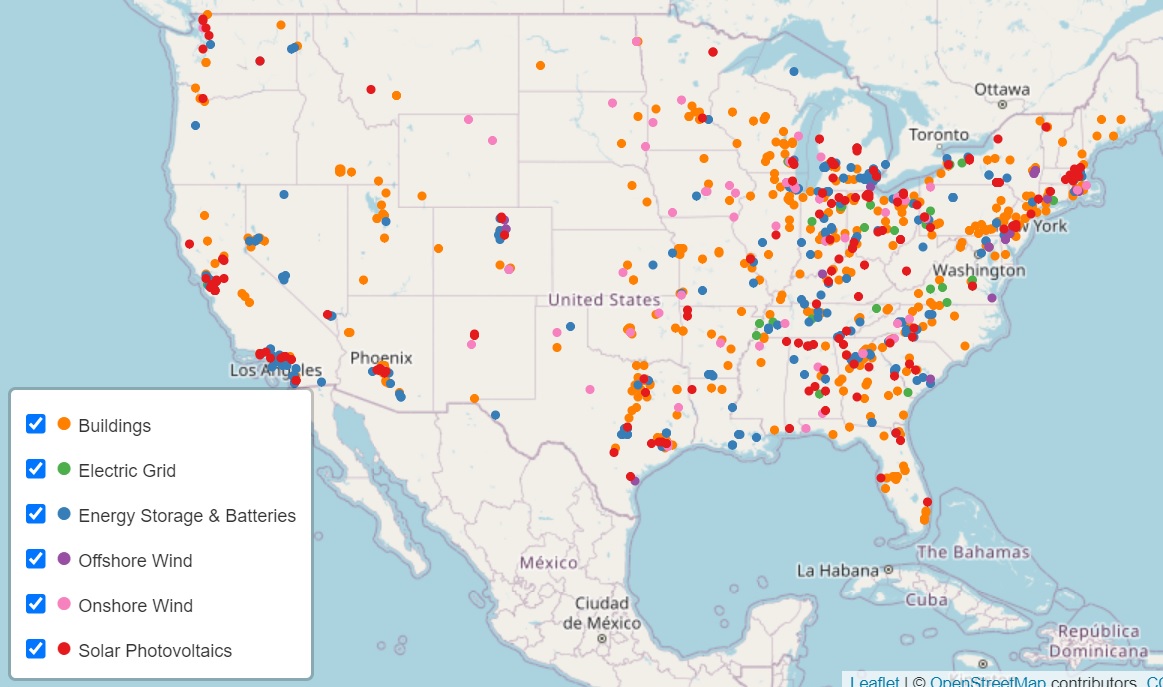New study in today's @nytimes: IRA changes the game for wind & solar
Clean energy companies now face an airtight business case to use US-made parts & pay workers fair wages.
4 big takeaways in 🧵
Study by @JesseJenkins & @ErinNMayfield, h/t @BGAlliance
bluegreenalliance.org/resources/the-…
Clean energy companies now face an airtight business case to use US-made parts & pay workers fair wages.
4 big takeaways in 🧵
Study by @JesseJenkins & @ErinNMayfield, h/t @BGAlliance
bluegreenalliance.org/resources/the-…
1. For the first time ever, U.S.-made wind & solar components will be cheaper than imports - a boon for clean energy manufacturing.
E.g., solar modules with 100% U.S.-made parts will be >30% cheaper than imports.
This holds for every segment of the wind & solar supply chains.
E.g., solar modules with 100% U.S.-made parts will be >30% cheaper than imports.
This holds for every segment of the wind & solar supply chains.

These cost savings come from a single IRA provision: the 45X manufacturing tax credit.
The resulting growth in U.S. solar & wind manufacturing will help us build the cleaner, fairer, & more reliable industrial base we need for our clean energy future.
The resulting growth in U.S. solar & wind manufacturing will help us build the cleaner, fairer, & more reliable industrial base we need for our clean energy future.
2. It now pays to pay clean energy workers well.
Wind & solar developers can slash costs by meeting prevailing wage & apprenticeship criteria for IRA's clean energy tax credits.
Solar and onshore wind developers who meet these labor standards will cut costs by >60%.
Wind & solar developers can slash costs by meeting prevailing wage & apprenticeship criteria for IRA's clean energy tax credits.
Solar and onshore wind developers who meet these labor standards will cut costs by >60%.

Offshore wind developers will cut costs by about 20% if they offer workers fair pay & career pathways.
By pairing labor standards with clean energy deployment for the first time, IRA changes the math.
It offers a no-brainer business case to do right by workers.
By pairing labor standards with clean energy deployment for the first time, IRA changes the math.
It offers a no-brainer business case to do right by workers.
3. We're poised to create millions of good wind & solar jobs.
IRA's tax credits will create demand for >4 million additional wind/solar jobs by 2035.
That's 5x as many solar jobs & twice as many wind jobs as we'd have without IRA.
IRA's tax credits will create demand for >4 million additional wind/solar jobs by 2035.
That's 5x as many solar jobs & twice as many wind jobs as we'd have without IRA.

Here's the breakdown of the >4M jobs:
Solar: 3.7M jobs, 2/3 in manufacturing & 1/3 in deployment
Wind: 0.4M jobs, 1/2 in both manufacturing & deployment
We now have a real opportunity to attach clean energy growth to high-paying jobs & detach it from forced labor overseas.
Solar: 3.7M jobs, 2/3 in manufacturing & 1/3 in deployment
Wind: 0.4M jobs, 1/2 in both manufacturing & deployment
We now have a real opportunity to attach clean energy growth to high-paying jobs & detach it from forced labor overseas.
4. New solar panels & wind turbines will trigger a surge in demand for aluminum, steel, & cement.
Solar panels are about 85% aluminum. By 2035, aluminum demand from U.S. solar power ALONE will well exceed today's TOTAL U.S. aluminum production, due to IRA-fueled solar growth.
Solar panels are about 85% aluminum. By 2035, aluminum demand from U.S. solar power ALONE will well exceed today's TOTAL U.S. aluminum production, due to IRA-fueled solar growth.

Steel & cement demand for wind/solar power also could grow 2x-3x by 2035.
To meet clean energy's rising demand for materials, we can't rely on emissions-intensive imports.
Instead, IRA invests in clean U.S. manufacturing of the materials forming the backbone of clean energy.
To meet clean energy's rising demand for materials, we can't rely on emissions-intensive imports.
Instead, IRA invests in clean U.S. manufacturing of the materials forming the backbone of clean energy.
In sum, IRA transforms the economics of HOW we build our clean energy economy.
We now have a path to build it on a foundation of good jobs, clean manufacturing, reliable supply chains, & greater equity.
It has always been the right path. Now it’s also the most economical path.
We now have a path to build it on a foundation of good jobs, clean manufacturing, reliable supply chains, & greater equity.
It has always been the right path. Now it’s also the most economical path.
Check out NYT's synopsis of the study's findings on the new math for clean energy, courtesy of IRA.
@lydiadepillis spotlights the data-backed hope & challenges of building a clean economy. With takes from @TreasuryDepSec, @micarrdc, @toddntucker, & me.
nytimes.com/2023/06/09/bus…
@lydiadepillis spotlights the data-backed hope & challenges of building a clean economy. With takes from @TreasuryDepSec, @micarrdc, @toddntucker, & me.
nytimes.com/2023/06/09/bus…
• • •
Missing some Tweet in this thread? You can try to
force a refresh

 Read on Twitter
Read on Twitter





